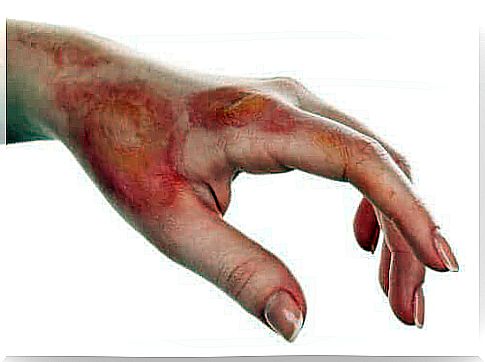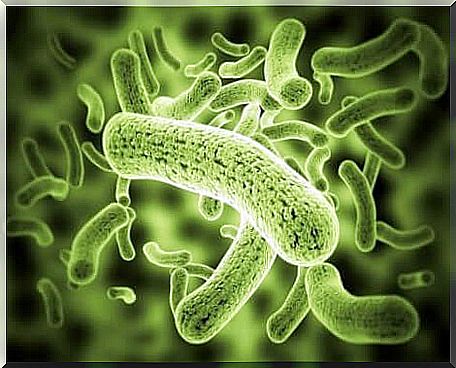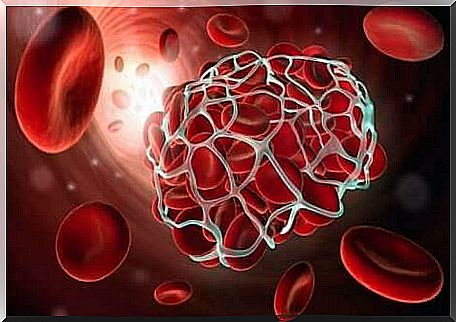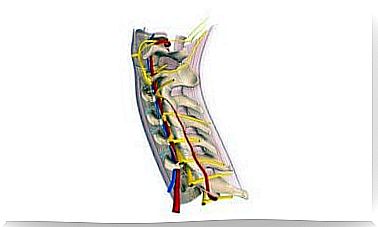Diagnosis And Causes Of Skin Necrosis

Diagnosing skin necrosis is tricky because it is not specific to any particular pathology. Many different reasons can lead to it. Thus, in order to make a diagnosis, the physician must carefully examine the patient’s symptoms.
The doctor should also take into account the patient’s medical history and any co-morbidities and other symptoms, as well as the results of blood tests. Analysis of all of these aspects will help you reach a specific diagnosis.
In any case, skin necrosis is a very serious disease. When it erupts and develops, it is irreversible. For this reason, it is essential to act quickly to determine the cause and select the appropriate treatment.
What is skin necrosis?

Skin necrosis means the death of a set of cells or tissue due to pathological causes. The process begins with a detrimental factor that causes severe enough damage that is impossible to repair.
Skin necrosis usually manifests as discoloration (purple, blue, or black skin). The area becomes numb, which is sometimes preceded by intense pain. In addition, it may leak odorous secretions.
Usually, skin necrosis is covered by scabies. It is a kind of black tissue accumulation with well-defined edges. It is also hard and completely stuck in damage.
This process can lead to tissue death in a large area of skin due to deficient blood circulation.
Diagnosis of skin necrosis: major causes

Many different causes can lead to skin necrosis, making it difficult to diagnose. However, its origin is usually influenced by three factors:
- Exogenous or external factors. For example, chemical agents, bed sores, medications, burns and frostbite.
- Infections. Certain infections lead to skin necrosis. Some of these include gas necrosis, ectema, acute meningococcal disease, and necrotizing fasciitis.
- Vascular occlusion. This is the most common reason. It can come from numerous sources such as cryoglobulinemia, vasculitis, thrombotic events, and other changes in hemostasis.
Many other causes can lead to skin necrosis. Often, many different factors also interact and lead to that condition.
Infectious processes that manifest as necrosis
All factors that cause skin necrosis are co-occurring pathologies. In the case of skin necrosis due to infection, the associated processes are usually:
- Ectum. Bacterial infection that causes wounds and scabies.
- Necrotizing fasciitis. This ailment causes rapid necrosis of subcutaneous fat and fascias, producing watery and fetid fluid.
- Gas death. A muscle infection that spreads quickly and can lead to death.
- Acute meningococcal disease. Causes acute skin rash with capillary eruptions, which may be followed by ecchymosis and ischemic necrosis. Sometimes it causes bleeding blistering skin changes.
Necrotic processes due to occlusion of blood vessels
When skin necrosis is due to blockage of blood vessels, these concomitant processes are common:
- Phospholipid antibody syndrome. This is an immune disorder in which the body accidentally attacks the proteins in the blood.
- Cryoglobulinemia. This is a rare disease often associated with hepatitis C. It causes the proteins in the patient’s blood to precipitate at low temperatures.
- Cholesterol embolization. This is a rare disease that occurs mainly in men over 60 years of age with generalized atherosclerosis. It is characterized by the release of cholesterol crystals.
- Calcifylaxis. This is a rare and potentially life-threatening syndrome. It causes calcification of blood vessels and is characterized by progressive and painful ulcers.
- Necrotizing vasculitis. Refers to a group of diseases that cause inflammation of the walls of blood vessels.
- Changes in haemostasis. Includes a variety of ailments in which the normal function of platelets changes, affecting the walls of blood vessels.
As you can see, many different processes are associated with skin necrosis. For this reason, diagnosing skin necrosis is difficult.









